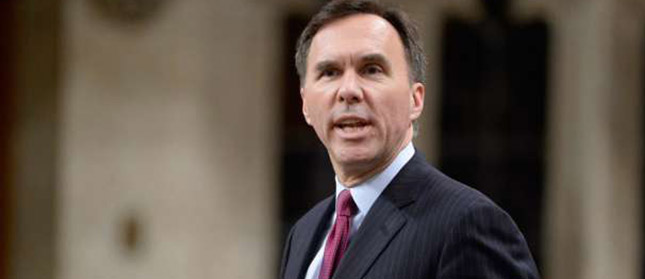
Canada’s minister of finance, Bill Morneau, is banking on infrastructure investment to promote long-term growth and job creation.
This week’s Fall Economic Statement proposes an additional $81 billion in infrastructure spending through to fiscal year 2027-28 and the establishment of a $35 billion Canada Infrastructure Bank – an arm’s-length organization dedicated to increasing public-private investment in transformational, growth-oriented infrastructure.
In an acknowledgement that people and goods need to move efficiently in a successful economy, the Statement cites the recent report of the Canada Transportation Act Review, which stated “the performance of the transportation system underpins the country’s trade performance, the performance of the economy and the health and sustainability of communities.”
As expected, transit takes the largest share of transportation investment. However, the federal government will also invest $10.1 billion in trade and transportation projects over the next 11 years to “build stronger, more efficient transportation corridors to international markets.” Priority investments will be identified using an “evidence-based (approach), using data on and analysis of transportation systems to identify the projects that will deliver the greatest trade benefits” and would include those that address congestion and bottlenecks along vital corridors and around transportation hubs and ports providing access to world markets. In addition, the statement says “trade must flow through our transportation system safely and securely, protecting Canadians, their communities, and our coastlines and waters,” focusing on marine and rail safety.
What all this means, and what impact it will have, remains to be seen. If successful, the real benefits may be longer-term in nature. The Statement forecasts continued sluggish economic growth for the next five years and did not include a timetable for returning to a balanced budget. Further details will follow in the 2017 budget.
“Canada is suffering from an infrastructure gap and is in the unfortunate position of playing catch-up in a slow-growth environment,” says the CEO of the Canadian Trucking Alliance, David Bradley, “But we’ll need to see the details of what transportation corridors will be funded and how long it will take to see the impact before we can assess the plan.”
“Leveraging increased private investment envisaged by the Infrastructure Bank makes sense if it happens,” he added. “But it will also inevitably mean more tolls and user fees, so we will need to see a real return in terms of reduced congestion, more predictable transit times and direct foreign investment in Canada – i.e., more freight.”
